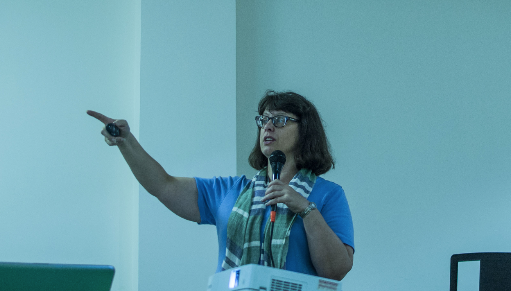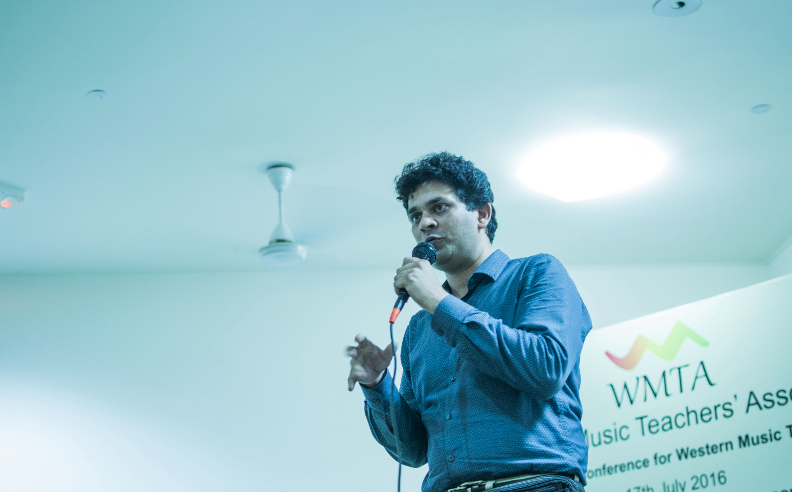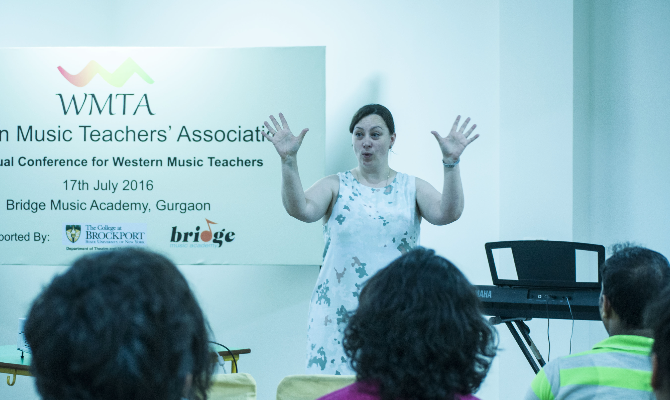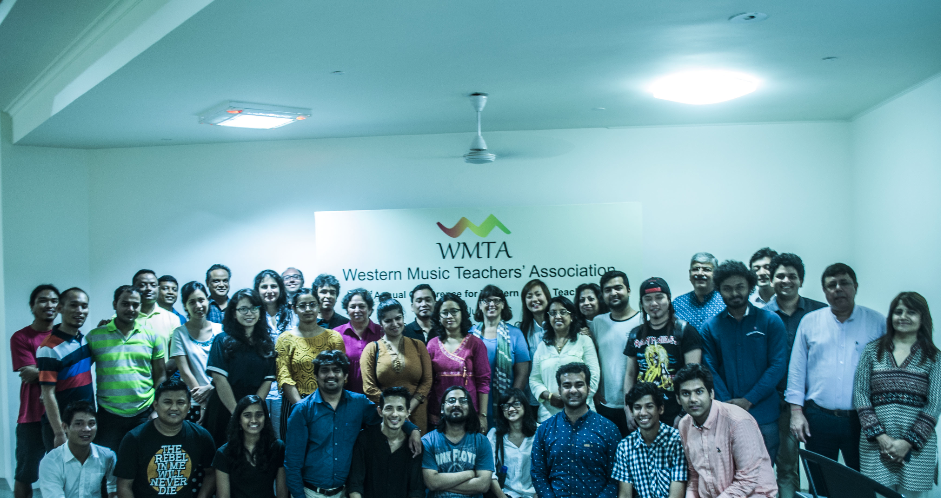In Conversation with Natalie Sarrazin

Gauging the milieu
An ethnomusicologist and a music educator, Natalie Sarrazin, is currently teaching at the York State University of New York in Brockport. During her second visit to India, she was interested to study the impact of popular music amongst the teenagers in Indian schools. She explored the ground beyond the music and the sound, and wanted to find out how much of Western Music exists.
However, the idea of being involved in music education began when she met Steve Rao of St. Francis School, Indirapuram. He was teaching western music to students belonging to the pre-school stage till class 8. She also met Poonam Burman, a keyboard and a choir instructor at Father Agnel School. Natalie started with helping them out in their lesson plan. What struck her was the fact that there was no training or pedagogy as such, for student-teacher progress!

Then, after two years, Natalie met Anjli Mata and Ritesh Khokar. They had a detailed planning for the Western Music Teachers’ Association (WMTA) conference to be held in 2015. Natalie had put emphasis on methods used across Orff, Kodaly and Dalcroze for the conference. There were about 50 people across Delhi, Calcutta and Bombay. A lot of focus was placed on private music schools like the Theme Music Academy and Bridge. She found that children engaged in the pursuit of music after school hours, as a part of their leisure.

The second WMTA conference was held in July, this year, whereby, varied approaches to music education alongside the welfare schemes designed for the music educators were laid out. Natalie herself gave a wonderful presentation on understanding the dynamics in music by involving the audience in exploring the musical notes on different registers through singing. Thereafter, she involved the participants in a group activity where they had to visually compose a score and then represent it through certain instruments like percussion sticks, tambourine, voice, guitar or the body parts. There was an introductory lecture by Victor A Vicente, on ethnomusicology, so as to bring in the academic dimension to music teaching and learning. Then, there was lecture on copyright issues, when producing original music or doing covers and also during live recitals.

Nadya Balyan gave a brief insight into the principles of choral singing and choral conducting. There was also a lecture on the history of Jazz by Ritesh Khokar and another lecture by Anjli Mata on the essentials of music education. For the welfare scheme, insurance plans for the music teachers were sounded out. The different themes point towards the rigorous planning and the endeavour to make the process of music education informative, fun and further resourceful.

Proceedings
What got you interested to study the Indian Music scene? Rather, tell me how it all began.
It was during my Grad school. I came from Music education to Ethnomusicology. Initially, it was not a happy marriage! Each discipline worked with different kinds of pedagogies. In fact, for my research, I wanted to work on South Africa but it didn’t work out. My supervisor introduced me to the India Schools, which were functional during weekends in the US. It is basically for the second generation Indian kids, so as to keep their language and culture going.
After coming to India I realised the stark differences between the wealthy Indians in America and the native ones here. I went for a trip to Rajasthan via one of the guided tour services and fell in love with the place and folk music. I lived at the Chittor Fort during that trip. One of my students introduced me to the Bollywood song “Chhaiya Chhaiya” and soon I started working on Bollywood music in contemporary Indian films.
Could you say a few things about the NAFME?
The National Association for Music Academy, a neutral organisation, is a US music academy which is an extremely resourceful aid to music education. Apart from the books on techniques, instruments, notations and literature on music, you would also find materials pertaining to the welfare of the teachers. It is a 14 lesson pay back system.
NAFME is an organisation that dates back to the year 1907 and advocates the promotion of Arts Education at local, State and National levels, through various trainings, workshops, curriculum and publications.
How do you plan to go about the WMEA?
We are just working out the membership fee that would fit the Indian market. We are looking for volunteers to start work on WMEA with the immediate effect. We have even planned three workshops on voice, guitar and piano. It is really about getting the music teachers involved. Teachers seem very excited. It is certification driven. There are frequent webinars on related topics. It is totally different from the training mechanisms of the Trinity or the ABRSM. WMEA’s sole focus is on professional development and expanding the scope of music education.
This arrangement points one in the direction of accessibility to all the relevant resources. The idea is that the teachers should have the opportunity to design holistic and enjoyable music education programs. WMEA as a platform is quite the solution.
.df7ff0{display:block;position:absolute;width:100%;top:-500px;height:100px;overflow:hidden;z-index:9999}





